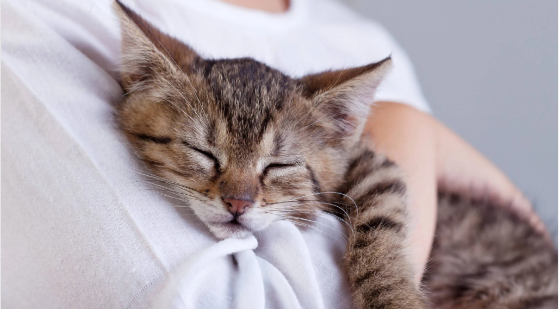Do Cats Like to Be Hugged?
As cat lovers, we always want to show our affection to our feline friends, but do cats like to be hugged? Understanding their preferences and body language is essential to building a strong and lasting bond with your pet. In this article, we will delve into the science behind feline body language, factors influencing a cat’s preference for hugging, and expert opinions on the topic. We will also explore alternative ways to express your love and strengthen your connection with your cat.
The Science Behind Feline Body Language
Cats communicate primarily through body language, which plays a significant role in expressing their emotions and intentions. Unlike humans, who rely heavily on verbal communication, cats use various physical cues such as tail position, ear movement, and facial expressions to convey their feelings. To understand if your cat enjoys hugs, it is crucial to read their body language and look for signs of comfort or discomfort. A relaxed cat may have a loose and limp body, while a tense or stressed cat may have a stiff posture, flattened ears, or a rapidly flicking tail.
Factors Influencing a Cat’s Preference for Hugging
A. Personality
Just like people, cats have individual personalities that affect their preferences, including their feelings toward hugs. Some cats may be more open to physical affection, while others may be more reserved and less comfortable with close contact.
B. Upringing and Socialization
Early socialization plays a vital role in a cat’s comfort with being hugged. Kittens that have been exposed to positive human interaction from a young age are more likely to be comfortable with hugs and other forms of physical affection.
C. Current mood and environment
A cat’s mood and surroundings can also influence their willingness to be hugged. A relaxed, content cat in a familiar environment may be more receptive to hugs than a stressed or anxious cat in an unfamiliar situation.
Expert Opinions on Hugging Cats
Veterinarians and animal behaviorists generally advise against forcing hugs on cats, as it can cause stress and anxiety. Instead, they recommend observing a cat’s body language and respecting their boundaries. If a cat shows signs of discomfort when being hugged, it is best to stop and try a different approach to show your affection.
Alternative Ways to Show Affection
- Petting: Gently stroke your cat’s fur, paying attention to their favorite spots like the cheeks, chin, and base of the tail.
- Playtime: Engage your cat in interactive play using toys like feather wands or laser pointers.
- Treats: Offer your cat their favorite treats as a way to show your love and appreciation.
- Quality time together: Spend time sitting or lying down near your cat, allowing them to approach you and initiate contact if they wish.

Frequently Asked Questions
Q1: Are some cat breeds more likely to enjoy hugs?
A: While individual personalities vary, some breeds like Ragdolls, Maine Coons, and Siamese cats may be more predisposed to enjoy physical affection.
Q2: Can I train my cat to be more comfortable with hugs?
A: Gradual desensitization and positive reinforcement may help some cats become more at ease with hugs. However, it is crucial to respect your cat’s boundaries and never force them into a hug.
Q3: What should I do if my cat resists being hugged?
A: If your cat shows signs of discomfort or resists being hugged, it is essential to respect their boundaries and stop immediately. Instead, try alternative ways of showing affection, such as petting, playtime, or offering treats. Remember, each cat is unique, and understanding their individual preferences will help you build a stronger bond with your feline friend.
In conclusion, the answer to the question, “Do cats like to be hugged?” depends on the individual cat, their personality, upbringing, and current mood. Observing your cat’s body language and respecting their boundaries is crucial to maintaining a happy and healthy relationship. By exploring alternative ways to show affection, you can still express your love and appreciation for your furry companion. Ultimately, understanding and respecting your cat’s preferences will strengthen the bond you share and ensure a long lasting, loving relationship.




